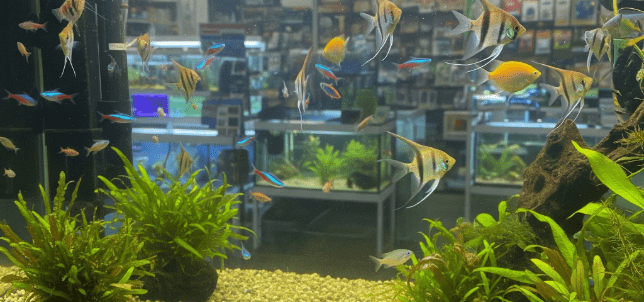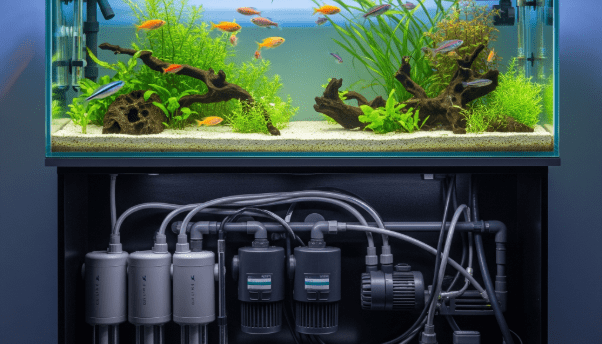How to Introduce Saltwater Fish to a New Tank
Updated
Nov. 01. 2025

For any aquarium shop that imports salt water fish, the journey doesn’t end when the shipment arrives. In fact, that’s when the most important phase begins. The way you introduce new fish into your saltwater tank determines their health, longevity, and overall market value.
Imagine this: You’ve invested in a new shipment of exotic fish; colorful tangs, angelfish, and clownfish but within a few days, several show stress or even perish. Most often, the cause isn’t poor quality; it’s improper acclimation.
Introducing new salt water fish to your holding or display tanks requires more than just releasing them into water. It’s a delicate, step-by-step process that ensures a smooth transition from the exporter’s environment to your shop’s aquarium systems.
At Bluefields Aquatics, we work with wholesalers and aquarium shops worldwide, helping them understand not just how to sell fish, but how to maintain their condition from arrival to sale. Let’s break down how to do it right.
Step 1: Prepare the Saltwater Tank Before Your Shipment Arrives
Preparation begins days before your shipment lands. A well-cycled and stable saltwater aquarium is the foundation for a successful introduction. Your tank must mimic natural marine conditions and remain chemically balanced.
Checklist before fish arrival:
- Salinity: Maintain between 1.020–1.026 specific gravity.
- Temperature: Keep between 24–26°C (75–79°F).
- pH: Stable between 8.1–8.4.
- Ammonia/Nitrite: Must remain at 0 ppm.
- Lighting: Dim or off during arrival to reduce shock.
If you operate multiple systems, designate a quarantine tank for new arrivals. This prevents disease transmission to established fish populations and helps you monitor new stock before display or resale.
A well-prepared environment can reduce mortality by up to 70% for new salt water fish shipments, a major profit protector for aquarium retailers.
Step 2: Float the Shipping Bags to Equalize Temperature
When your saltwater fish arrive, resist the temptation to open the boxes immediately. Rapid changes in temperature and salinity are the biggest killers during this stage.
Instead:
- Keep the room lights dim or off.
- Float the sealed bags in the saltwater tank for 15–30 minutes.
- This allows gradual temperature equalization between bag water and tank water.
This simple step prevents thermal shock, a common issue that weakens fish immune systems and makes them vulnerable to infection.
Remember: stressed fish don’t sell well. Healthy, calm behavior increases visual appeal and boosts customer confidence when they visit your shop.
Step 3: Drip Acclimation – The Gentle Transition
The drip acclimation method is considered the gold standard for introducing marine fish. It allows fish to slowly adapt to your saltwater aquarium’s salinity, pH, and other water parameters.
Here’s how aquarium shops can do it efficiently:
- Carefully open the fish bags and pour the contents (fish + bag water) into clean acclimation containers.
- Using airline tubing, start a siphon from your tank and let water drip slowly into the container, about 2–4 drops per second.
- After 45–60 minutes, the volume should double.
- Gently remove each fish using a net and place it into the tank. Never pour the bag water into your system, as it contains waste and possibly trace ammonia.
This process might take time, but it’s worth it. Fish that are drip-acclimated show higher survival rates and recover faster from shipping stress, meaning you can display or sell them sooner.
Step 4: Quarantine Before Display
Many aquarium shops skip this step to save time, but quarantining your new salt water fish is non-negotiable if you value long-term profitability.
A 5–7 day quarantine helps identify:
- Signs of parasitic or bacterial infections
- Injuries from transport
- Abnormal behavior (lethargy, clamped fins, refusal to eat)
During this period:
- Feed lightly and observe appetite.
- Dose the water with broad-spectrum anti-parasitic treatments if necessary.
- Maintain stable parameters identical to your display systems.
Quarantine not only protects existing stock but also strengthens customer trust. Importers and retailers known for selling healthy, well-conditioned saltwater fish for sale quickly earn repeat buyers.
Step 5: Introduce the Fish to Display Tanks
Once your new fish pass the quarantine stage, it’s time to introduce them to the saltwater tank displays.
Follow these best practices:
- Match temperature and salinity exactly between the quarantine and display systems.
- Introduce fish when the store is quiet (early morning or after closing) to minimize disturbance.
- Release fish in dim lighting to help them orient calmly.
Observe for at least one hour afterward. Healthy fish swim actively, explore their environment, and display normal coloration.

Step 6: Monitor Behavior and Record Key Data
For professional aquarium businesses, monitoring data is part of quality assurance. Keep a detailed intake record for every shipment:
- Date received
- Species and quantity
- Source/exporter
- Acclimation duration
- Survival rate after 24–48 hours
Over time, this data reveals which marine fish exporters provide consistently healthy shipments allowing you to refine your sourcing strategy and improve your bottom line.
At Bluefields Aquatics, we encourage our clients to share post-shipment feedback to help us maintain exceptional quality and continuous improvement.
Step 7: Maintain Ideal Tank Conditions Post-Introduction
Once your new salt water fish are settled, maintaining stability becomes your next mission.
Here’s how:
- Filtration: Ensure strong biological filtration using live rock or bio-media.
- Regular Water Changes: Replace 10–15% weekly to remove nitrates.
- Feeding: Offer small, frequent meals; overfeeding leads to waste buildup.
- Lighting Schedule: Keep consistent day-night cycles (8–10 hours of light daily).
A stable saltwater aquarium supports vibrant color, natural behavior, and faster adaptation — all of which make your fish more appealing to buyers.
Step 8: Work with Reliable Saltwater Fish Exporters
Even with flawless acclimation, fish quality begins at the source. Choose exporters who specialize in handling, packaging, and logistics for the saltwater fish for sale.
Reputable exporters:
- Follow CITES and national wildlife regulations.
- Use oxygenated double bags and temperature insulation.
- Conduct pre-export health inspections.
- Ship with stable salinity and water temperature.
At Bluefields Aquatics, we take pride in supplying high-quality salt water fish to aquarium shops and wholesalers worldwide. Each fish is handled humanely and packed under strict biosecurity standards, ensuring it arrives in peak condition.
Healthy fish translate into fewer losses, higher turnover, and happier customers for your retail operation.
Step 9: Educate Your Staff and Customers
Your staff should be trained to recognize early stress signs, maintain consistent water parameters, and explain acclimation benefits to walk-in customers.
Educated teams help reduce mishandling, improve care standards, and enhance your store’s reputation for professionalism.
You can also display educational posters or brochures showing how your store sources and acclimates fish; demonstrating transparency and expertise that attract loyal hobbyists.
Step 10: Turn Quality Into a Competitive Advantage
In the aquarium business, quality and consistency determine success. Importers and shop owners who prioritize fish health and proper acclimation consistently outperform competitors who treat it as an afterthought.
When your customers see lively, colorful fish swimming confidently in clear tanks, they remember your shop and they come back for more.
Proper acclimation is not just a technical step; it’s an investment in customer satisfaction, brand trust, and long-term profitability.
Conclusion
Introducing salt water fish into a new tank may seem routine, but for serious aquarium retailers and wholesalers, it’s the cornerstone of operational excellence.
By:
- Preparing tanks in advance,
- Using controlled acclimation methods,
- Partnering with reliable exporters, and
- Maintaining post-introduction stability —
you secure your reputation as a trusted supplier of healthy, thriving fish.
At Bluefields Aquatics, our mission is to provide exporters and aquarium shops with not just beautiful marine life, but also the knowledge and partnership to ensure every fish flourishes from ocean to aquarium. Contact us
RELATED SEARCHES:
